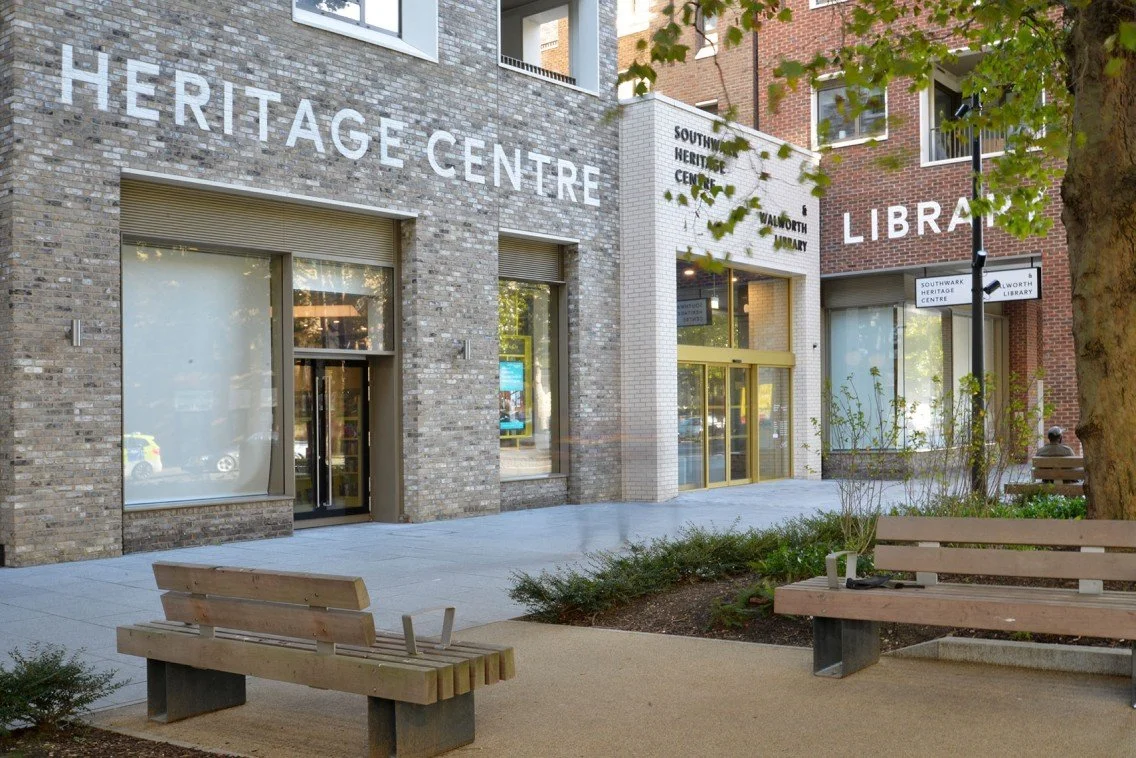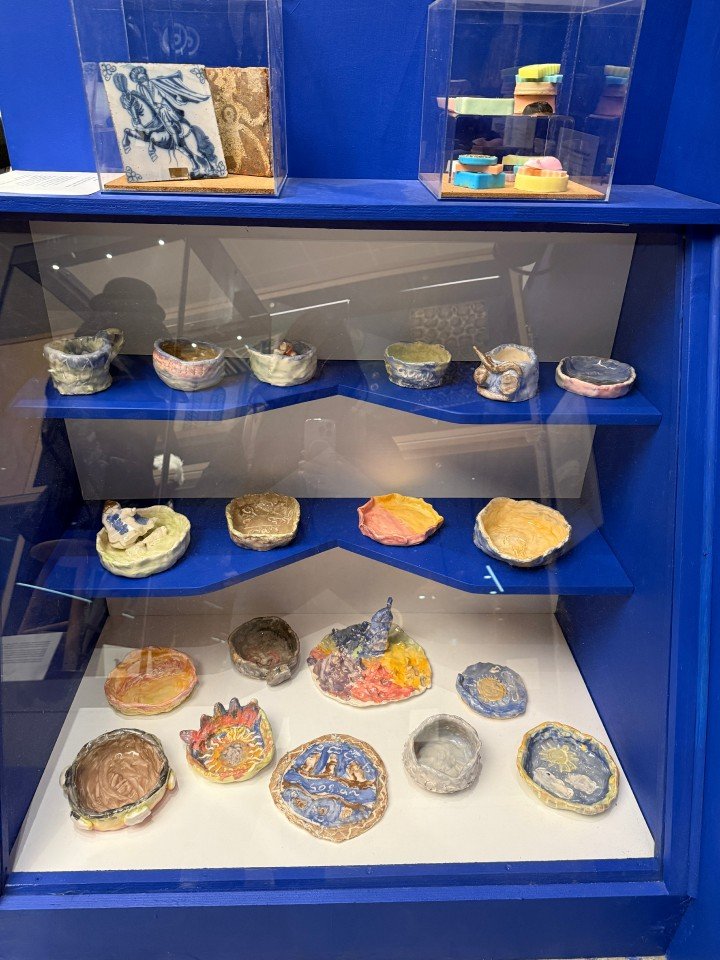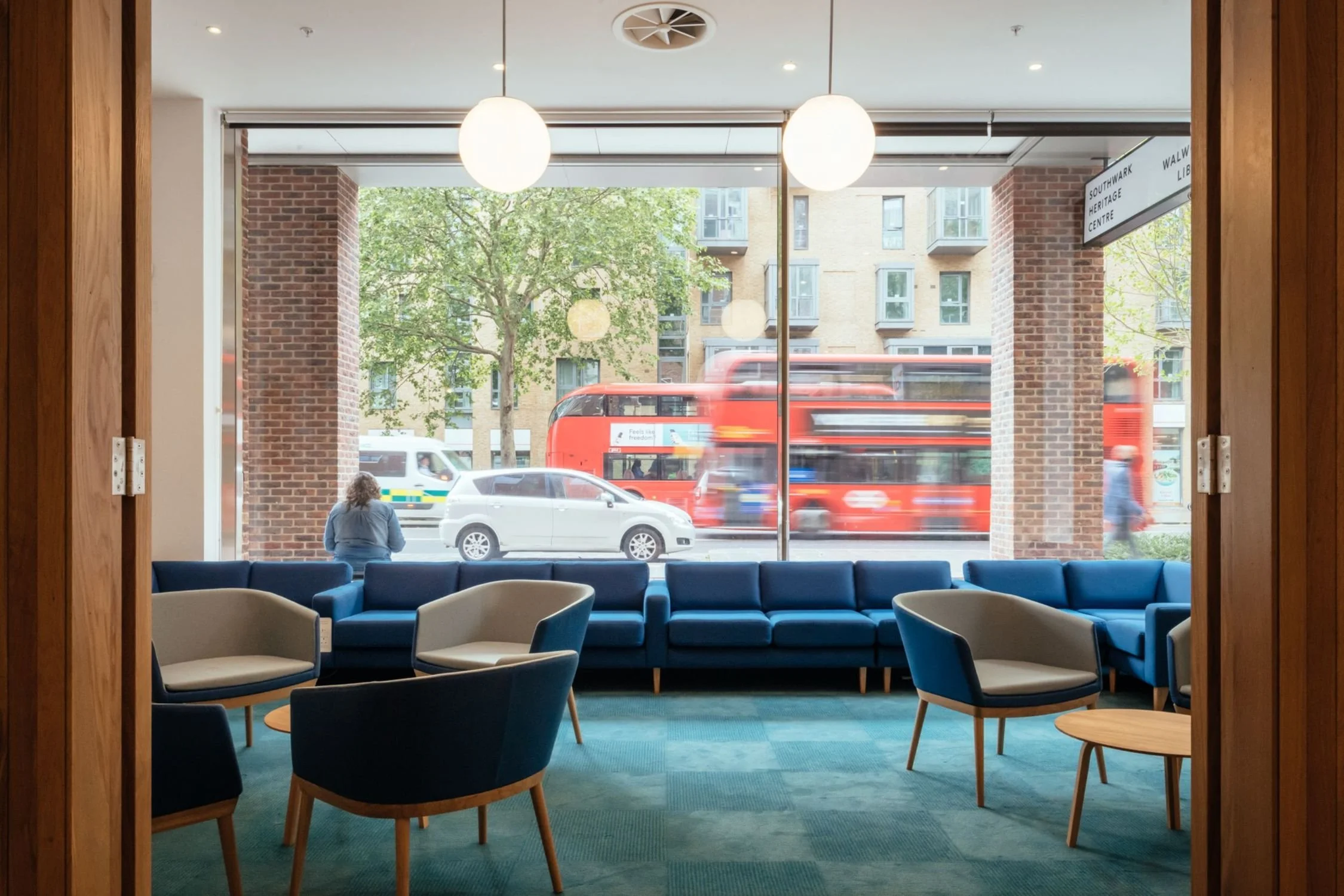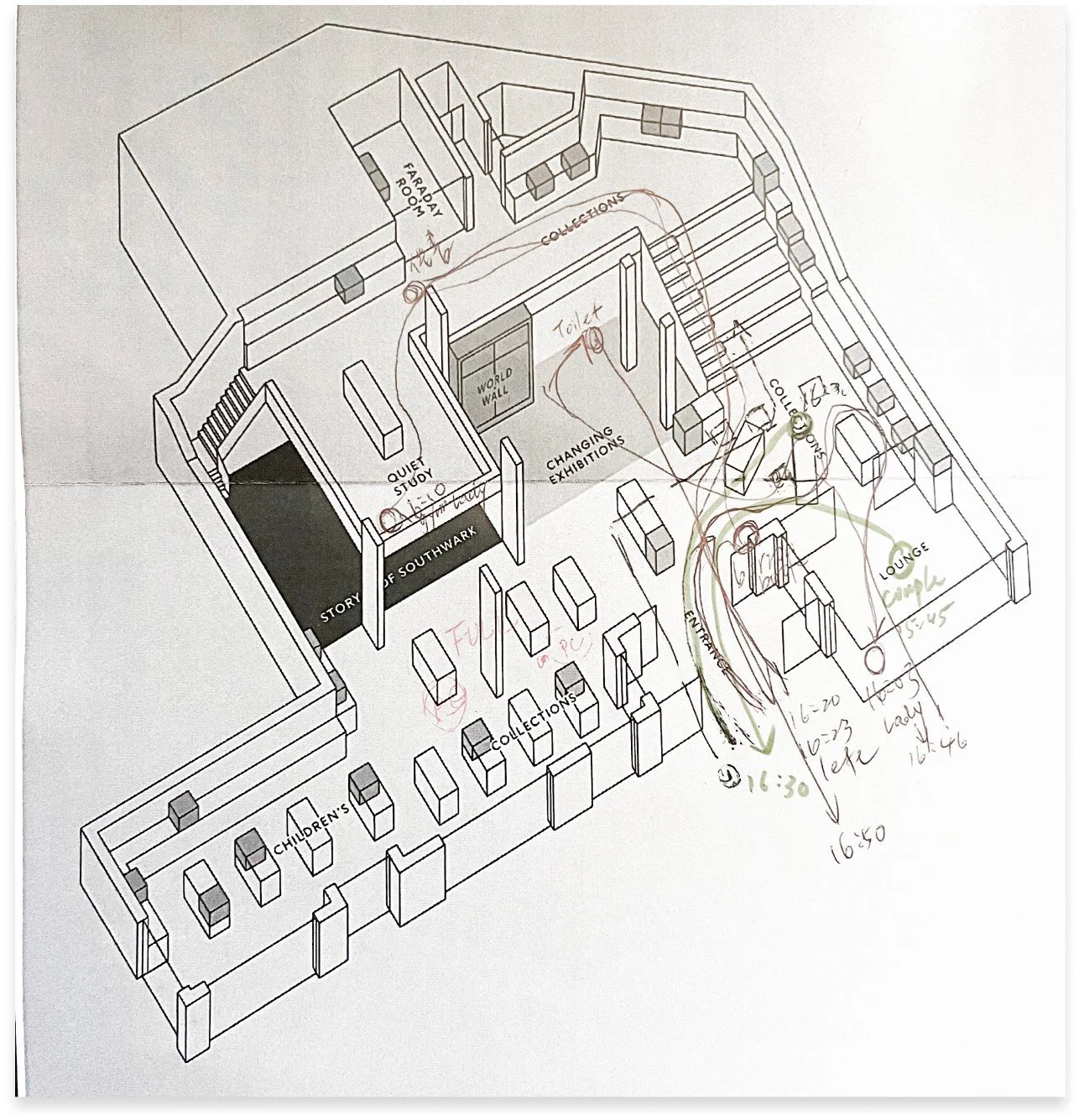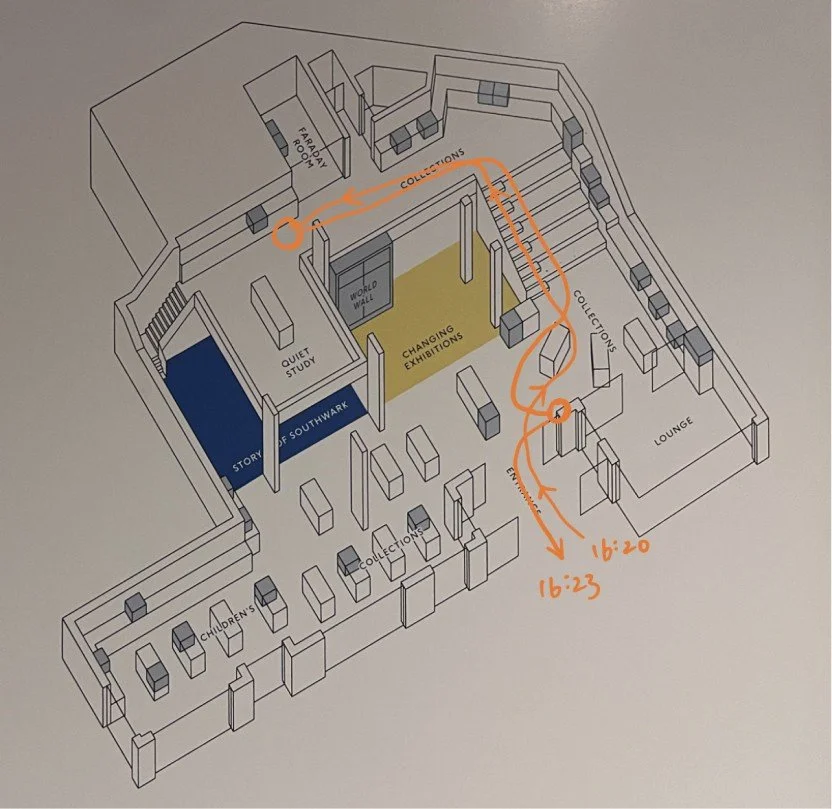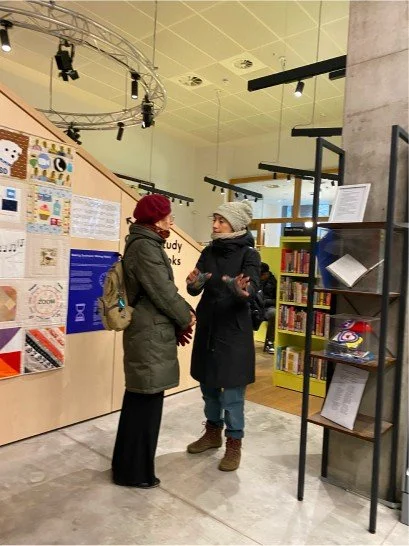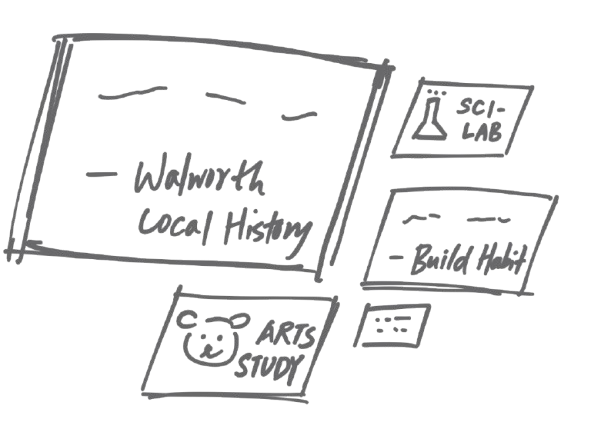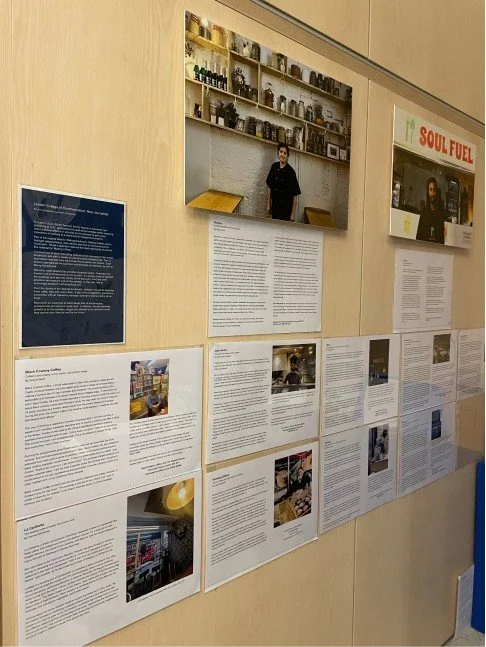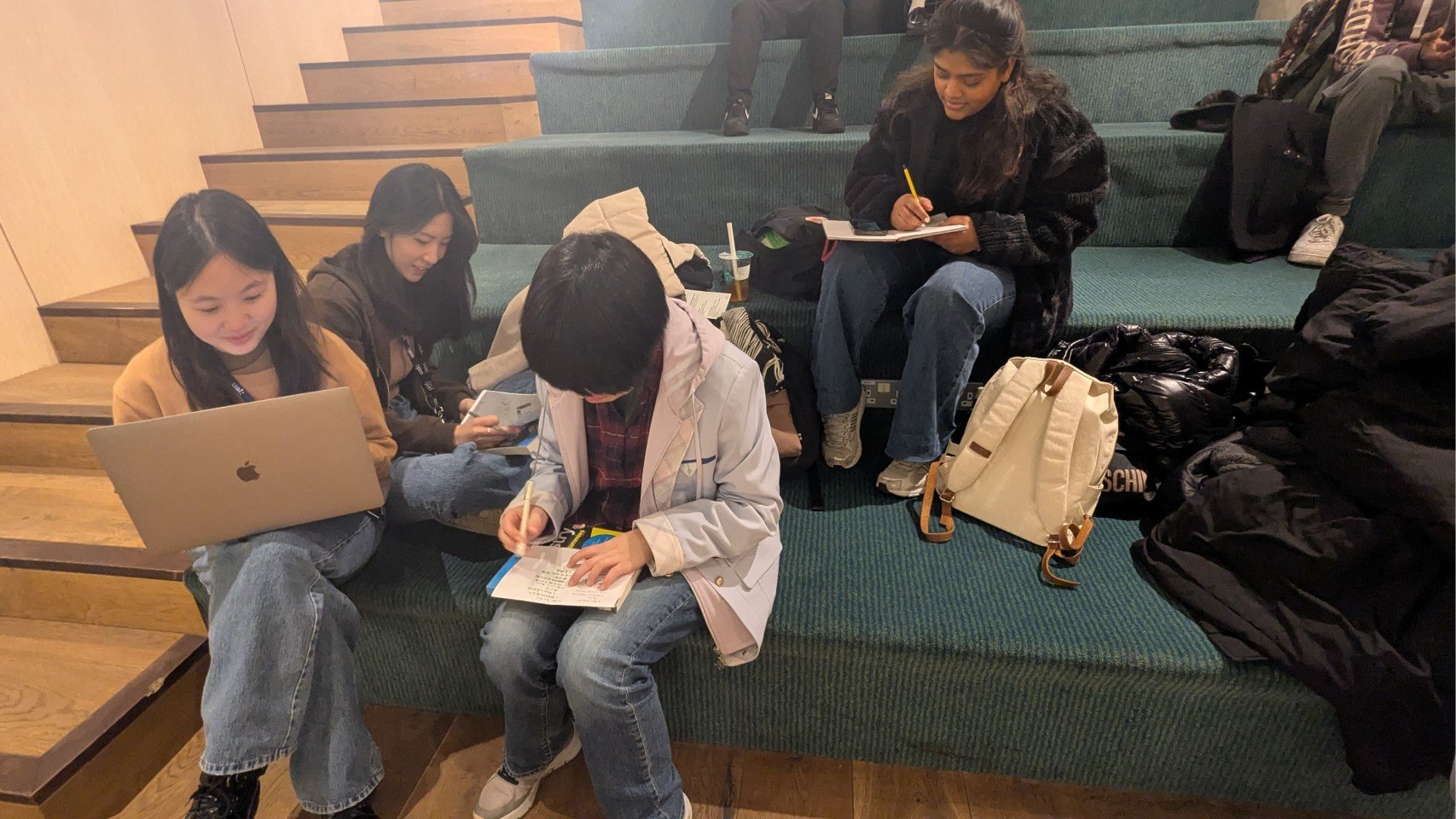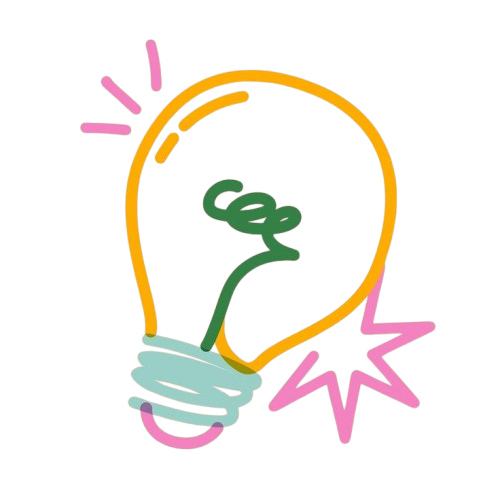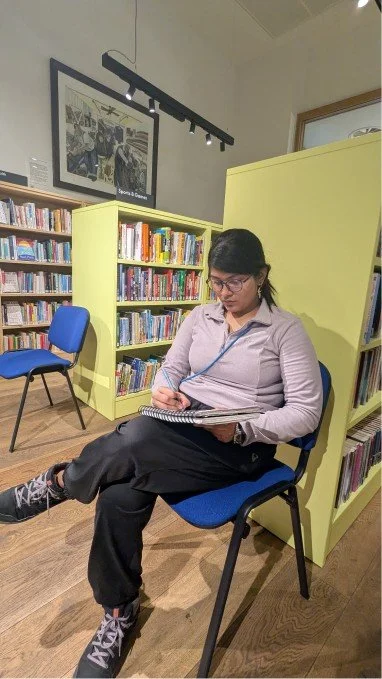Topic:
Community Memory
Team:
Sakshi, Sarthak, Angelina, Ojaswi, Anwesha, Chenchen, Wuyou, Lissy, Ellen
southwark
Brief:
Design a local memory preservation and information sharing system inspired by and integrated with a local library collection
walworth library
info about library
Located in Elephant & Castle, a built-up area and transport hub in northern part of Southwark. Home to Archives and Art collection. A selection of objects from the Cuming Museum collection and the Southwark art collection.
what’s special here
special
Must-Visit Section at Walworth Library
Faraday Room –
A unique reading room named after scientist Michael Faraday, featuring copper-lined walls that create a Faraday cage, blocking electromagnetic signals for a distraction-free environment.
Handmade Pottery –
Friars Primary students, guided by Lenny from Maison S. Sommet, crafted pottery inspired by Southwark’s places and stories, continuing its rich ceramic tradition.
Lounge –
A versatile space for reading, meetings, and events. It seats approx 28 people and is available for hire for interviews, presentations, and gatherings.
01. BehaviOral Mapping
Space Usage- Most are young people (students and professionals) in upper learning space or ground-floor chatting stairs.
/INSIGHTS:
Purposeful Visits– Most users come with a clear purpose (studying, working, borrowing/returning books) and leave quickly after completing their task.
/INSIGHTS:
research methods
Limited Engagement with Exhibitions & Collections – Very few visitors explore the heritage exhibition or bookshelf collections. Most are already familiar with the library layout and skip these areas.
/INSIGHTS:
Methods help us to know this place & people in this place
We had a full tour of the library led by Manager of the library Staffeno and spent nearly two hours observing how people used the space and its resources. Though we might have seemed a bit suspicious at times, everyone gained valuable insights from the experience.
02. AEIOU
Reading, students studying
Occupied lounge area with different groups of people
Individual playing video games with library internet
/ACTIVITY:
Limited communal computers (most popular area)
Zero to very low activity in museum space
Students hanging out (not studying)
/ACTIVITY:
The library is a space that requires a certain level of quiet, where most individuals are engaged in their own activities. Therefore, it’s essential to respect personal space and ensure a considerate environment for all users.
/INSIGHTS:
Phased Progress
Things to explore deeper
personal idea
What kind of community projects bring people together?
Go a level deeper than just the space itself
How can we let people interact with each other? - create new memory together
What does local mean? who can be a local? Who decides who’s a local?
Libraries are designed to be quiet spaces, making it an interesting setting to explore how much personal space can be shared or crossed without causing discomfort. It’s a balance between fostering a sense of community and maintaining individual space.
Design a space where readers can share their key takeaways from books they’ve read, such as memorable passages or impactful sections. This allows others to explore different perspectives and discover new books through shared insights.
The brief is more about the people than the library itself, to build a coummunity
The system you make for this library, should be replicable somewhere else too
Things to explore deeper
Divide into groups to work, ensuring tasks are distributed rather than everyone doing the same thing.
NEXT step
Start by concentrating on one key aspect of the brief, then gradually weave it into the other elements and aspects.
Thinking about how information sharing can be fun? thinking more about the community aspect.
Take action first and refine the brief along the way. We can start with activities that help us explore preservation methods, then revisit and further define our direction.

